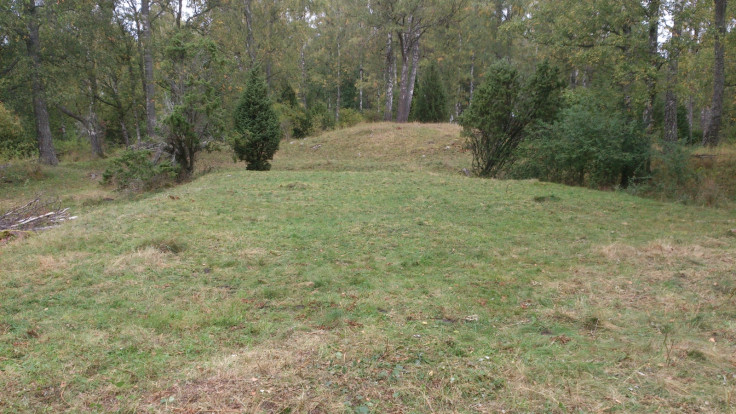A huge Viking manor house has been discovered on the island of Björkö in Sweden
The structures were discovered near Birka, the first Viking town in Sweden.
The remains of a 40-metre-long Viking manor have been unearthed on the island of Björkö in Sweden. The manor may have belonged to the royal bailiff of Birka, the Viking Age town that was set up close by. The discovery was made by a team of archaeologists from the Centre for Baltic and Scandinavian Archaeology, Stockholm County Museum and the Archaeological Research Laboratory, Stockholm University.
They had been excavating the island's main harbour to find out more about what it would have looked like in Viking times and how it was organised. This work is crucial to learning about the town of Birka that was set up there.
"It would have been the first proper Viking town established in Sweden as well and a major trading hub", study author Sven Kalmring told IBTimes UK.
During the 2015-16 excavation season, the team became intrigued by another harbour on the northern side of the island, known as Korshamn. There, a substantial, artificially built-up terrace stands, and it was thought to be a plateau to an ancient house structure. "It had been known for at least 100 years, but no archaeological research to date had been conducted, so the history of this terrace and its purpose had remained a mystery", Kalmring said.
The team carried out geophysical surveys of the area using ground-penetrating radar. They identified other terraces that appeared to be the foundations of a large house. It would have been continuously inhabited prior to and during the establishment of the Viking town of Birka.

It included a 40 metre-long Viking Age hall, which would have been connected to a pagan temple. These features have been dated to sometime after 810 AD. It is likely that high-status Vikings lived there.
Finding the first Christian church
In fact, the archaeologists believe that this property is connected to a powerful man known in historical sources as Herigar, the royal bailiff of Birka. For centuries, archaeologists had hoped to find where his manor might have been located, and these structures are the most likely location found so far.
Herigar is central to the region's history during Viking times. He was converted to Christianity by Ansgar, a German archbishop who came to Birka in around 830 AD in what was the earliest Christian mission to Scandinavia. The bailiff then agreed to have a church built on his land – the first of its kind in Scandinavia. The recent discovery is particularly interesting because it points to a possible location to where the remains of this church might be located.
"It would be fantastic to find traces of the Christian church, the first one that we know of in Scandinavia, and this is the next stage in our research. The whole research can tell us about Viking archaeology – the transition from the pre-Viking period to the Viking Age, the religious changes that were occurring, and the encounter of Vikings with the Christian missionaries that tried to convert them", Kalmring pointed out.
The archaeologists' full findings are to be published in international scientific journal Archäologisches Korrespondenzblatt.
© Copyright IBTimes 2024. All rights reserved.






